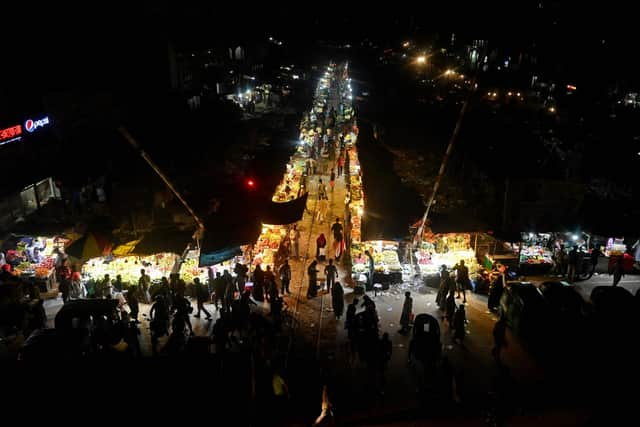COP26: Bangladesh cities battle climate migrants’ surge
The 50-year-old once-solvent homemaker lost her property, devoured by the mighty Meghna river, which forced her family to migrate to the South Asian nation’s second largest city in Chittagong.
Begum rented a 10x10 square-foot corrugated sheet-made shanty in an illegal slum – erected by encroachers to accommodate the inflows of climate refugees -- next to the Karnaphuli river where she now lives with four children and husband.


Advertisement
Hide AdAdvertisement
Hide Ad“We’re penniless, [we] cannot afford a better accommodation, but this overcrowded slum,” Begum, now a lentil factory worker, said, adding her once-landlord husband now peddles cycle-rickshaws to make a living.
Every year, like Begum, thousands of residents from coastal Bangladesh are forced to move to the already overcrowded city slums.
The capital Dhaka’s some 5,000 slums are accommodating four million, while Chittagong’s 200 slums house 1.4 million migrants.
With population density per square kilometre skyrocketing in those two largest Bangladeshi metros – 48,000 and 35,000 in Dhaka and Chittagong consecutively – climate migrants are only adding up the woes.


The International Centre for Climate Change and Development (ICCCAD), a Dhaka-based research firm, found between 400,000 and 500,000 people move to the capital alone each year.
“Some 70 per cent of these people are living in the slums,” says Sarder Shafiqul Alam, ICCCAD senior co-ordinator.
Dhaka mayor Sheikh Fazle Noor Taposh recently expressed concern, saying the capital’s living standard cannot be improved unless capital-bound migration is stopped. By 2041, Dhaka's population will hit the 50 million mark, an unbelievable number to the 306sqkm metropolitan area.
Chittagong city is the second largest recipient of climate migrants, expecting an annual estimation around 30,000 people.
Advertisement
Hide AdAdvertisement
Hide Ad“People are moving in[to] the cities as they have nothing else to survive in coastal areas as they have already lost their homes,” says M Rezaul Karim Chowdhury, chief of COAST, a NGO working in the coastal belts.
A World Bank report said some 13.3 million people will become climate migrants in Bangladesh by 2050, representing about 37 per cent of all South Asian migrants.
The shanties are mostly vulnerable to overheating and heavy rains.
Often the slums are made multi-storied, with fragile bamboo structures for more profits. The conditions in these unhygienic neighbourhoods are often unbearable.
Topographically, the hilly Chittagong city possesses a unique risk for the slum dwellers – landslide possibilities due to heavy rainfall during monsoon – causing them to relocate constantly without finding a permanent solution.
The port city often goes underwater during monsoon or when the sea swells up. Around 69 per cent of Chittagong was affected by high tides to various extents at different times, according to the Bangladesh Public Works Department.
Some 20 per cent of the city regularly gets submerged, with sea swells going over 2m. The latest IPCC report predicts sea level will rise 5m by 2150. If so, over 69 per cent of Chittagong will be underwater by 2150.
Saleemul Huq, the ICCCAD director, proposed to build secondary climate-resilient and migrant-friendly cities to take the pressures off the two congested metro areas.
Advertisement
Hide AdAdvertisement
Hide Ad“Only then, the future climate victims could migrate with dignity rather than under duress,” he said.
- Shamsuddin Illius is a reporter based in Bangladesh.
He is the Bureau Chief at The Business Standard, Bangladesh’s largest business daily. Mr Illius is a fellow with the Climate Change Media Partnership and is attending COP26. This article is part of The Scotsman and Earth Journalism Network partnership – set up by global non-profit organisation Internews.
Comments
Want to join the conversation? Please or to comment on this article.
